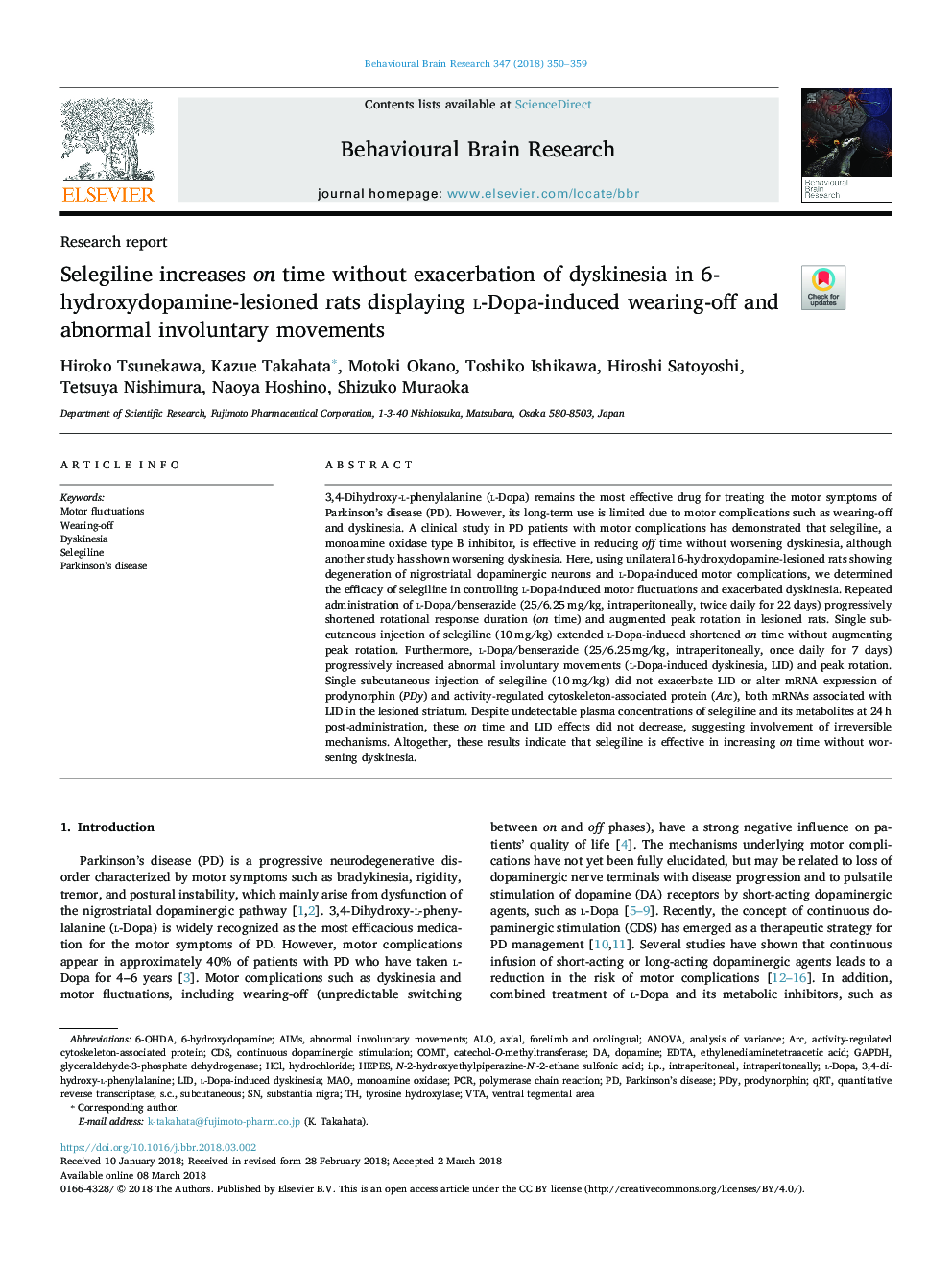| Article ID | Journal | Published Year | Pages | File Type |
|---|---|---|---|---|
| 8837802 | Behavioural Brain Research | 2018 | 10 Pages |
Abstract
3,4-Dihydroxy-l-phenylalanine (l-Dopa) remains the most effective drug for treating the motor symptoms of Parkinson's disease (PD). However, its long-term use is limited due to motor complications such as wearing-off and dyskinesia. A clinical study in PD patients with motor complications has demonstrated that selegiline, a monoamine oxidase type B inhibitor, is effective in reducing off time without worsening dyskinesia, although another study has shown worsening dyskinesia. Here, using unilateral 6-hydroxydopamine-lesioned rats showing degeneration of nigrostriatal dopaminergic neurons and l-Dopa-induced motor complications, we determined the efficacy of selegiline in controlling l-Dopa-induced motor fluctuations and exacerbated dyskinesia. Repeated administration of l-Dopa/benserazide (25/6.25â¯mg/kg, intraperitoneally, twice daily for 22 days) progressively shortened rotational response duration (on time) and augmented peak rotation in lesioned rats. Single subcutaneous injection of selegiline (10â¯mg/kg) extended l-Dopa-induced shortened on time without augmenting peak rotation. Furthermore, l-Dopa/benserazide (25/6.25â¯mg/kg, intraperitoneally, once daily for 7 days) progressively increased abnormal involuntary movements (l-Dopa-induced dyskinesia, LID) and peak rotation. Single subcutaneous injection of selegiline (10â¯mg/kg) did not exacerbate LID or alter mRNA expression of prodynorphin (PDy) and activity-regulated cytoskeleton-associated protein (Arc), both mRNAs associated with LID in the lesioned striatum. Despite undetectable plasma concentrations of selegiline and its metabolites at 24â¯h post-administration, these on time and LID effects did not decrease, suggesting involvement of irreversible mechanisms. Altogether, these results indicate that selegiline is effective in increasing on time without worsening dyskinesia.
Keywords
HClALO6-HydroxydopamineGAPDHLIDCatechol-O-methyltransferases.c.HEPESSelegilinei.p.qRTMAOCOMT6-OHDAVTA3,4-dihydroxy-l-phenylalaninel-DOPAEDTAEthylenediaminetetraacetic acidWearing-offAIMSParkinson’s diseaseContinuous dopaminergic stimulationanalysis of varianceANOVAsubstantia nigratyrosine hydroxylaseabnormal involuntary movementsDopaminedyskinesiaL-DOPA-induced dyskinesiasubcutaneousactivity-regulated cytoskeleton-associated proteinArcmonoamine oxidaseventral tegmental areaMotor fluctuationshydrochloridepolymerase chain reactionPCRprodynorphinCdSglyceraldehyde-3-phosphate dehydrogenase
Related Topics
Life Sciences
Neuroscience
Behavioral Neuroscience
Authors
Hiroko Tsunekawa, Kazue Takahata, Motoki Okano, Toshiko Ishikawa, Hiroshi Satoyoshi, Tetsuya Nishimura, Naoya Hoshino, Shizuko Muraoka,
